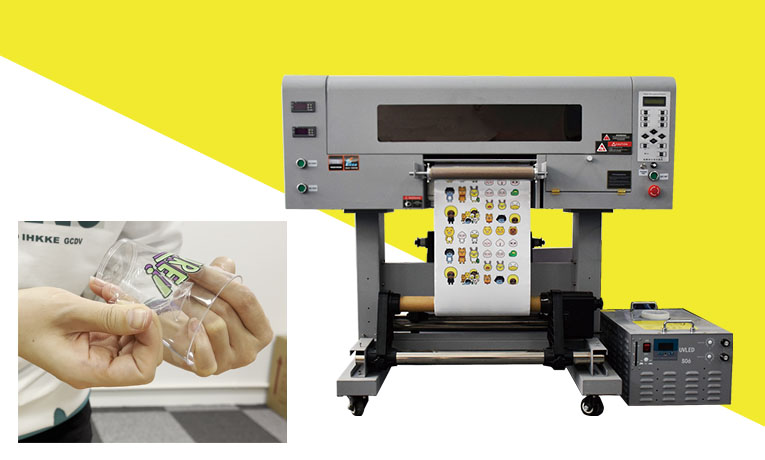UV directly printing and UV DTF printing, which one is better?
UV directly printing and UV DTF printing, which one is better?
How much do you know about UV DTF printing?
A novel printing technique called sublistar UV DTF Printing imprints graphics on films using ultraviolet curing technology. The designs can then be applied to hard, oddly shaped materials by pressing down with the fingers, then peeled off the film.
For UV DTF printing, a particular kind of printer known as a UV flatbed printer is needed. An LED cold light source lamp used to print graphics on “A” film emits UV light that the inks are immediately exposed to. The photosensitive curing agent in the inks quickly dries when exposed to UV light.
Next, use a laminating machine to combine the “A” and “B” films. “A” film is on the back of the design, and “B” film is on the front. Afterward when, clip the design’s outline with cutters. Remove the “A” film from the design and stick it firmly to the pattern to be decorated. Peel off the “B” film after a few moments have gone. Finally, the pattern is successfully highlighted in this section. Colorful as well as unique colors are used in the prototype, which is sturdy and does not scrape off or wither away easily after being transferred.

What’s the use of UV DTF printers?
Since UV DTF printing may be done on a range of materials, including metal, leather, wood, paper, plastic, ceramic, glass, etc., it is adaptable. It can be used on irregular and curved surfaces. Designs might transfer when the object is submerged. Additionally, this printing technique is safe for the environment. Since UV curing ink is solvent-free, there won’t be any hazardous substances that evaporate into the atmosphere.
In summary, UV DTF printing is a very flexible printing technology that can be helpful for a number of printing activities, such as printing or modifying menus for restaurant menus and applying branding to home appliances. Furthermore, UV printing enables you to put any logo you desire on products. It is suitable for outdoor objects due to their toughness, resistance to fading, and resistance to scratching.
The difference between UV printing and UV DTF printing
The printed image is first produced on the glue film A, which is then laminated with film B using a laminating machine, transferring the image from film A to film B. In order for the printed image to remain on the medium, you must lastly adhere the film B to it with adhesive.In order for the printed image to remain on the medium, you must lastly adhere the film B to it with adhesive.
As a maker of UV printers, our testing findings demonstrate that UV dtf is not a successful UV printing method. The explanations are as follows.
The cost of printing UV DTF, which requires both film and inks, is significantly more than that of the ink. The cost of printing increased more than two times as compared to UV directly printing.
Printing speed: Unlike UV direct printing, UV DTF requires printing onto film first, followed by laminating, cutting, and sticking, which adds significantly more time to the printing process.
Adhesion: Sublistar UV direct printing, which involves printing UV inks directly onto media and letting them dry under a UV lamp, has good and strong adhesion. UV direct-to-film printing, however, involves printing on glue and sticking the printed image to the media, which results in inadequate adhesion between the image and the media.Therefore, we don’t believe UV DTF is an excellent UV commercial printing.
